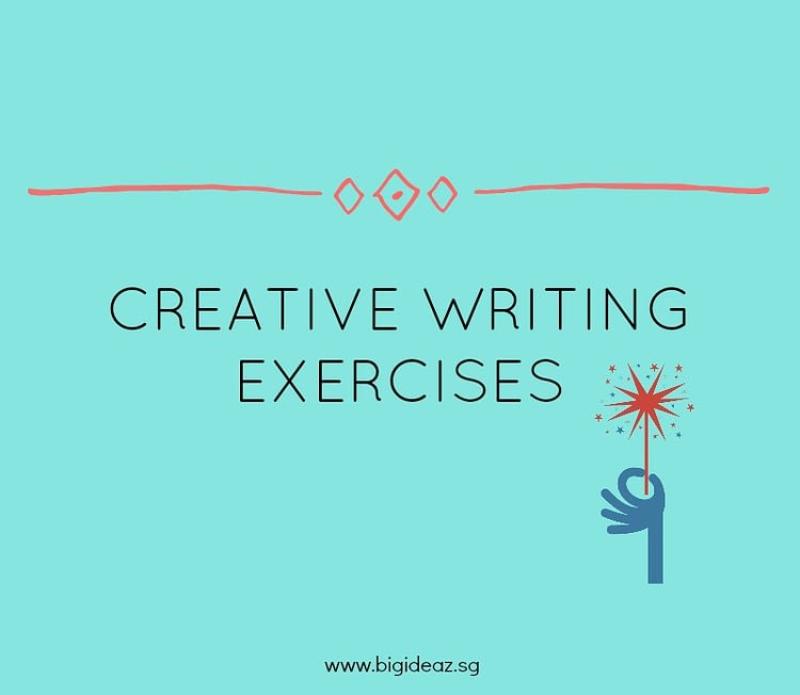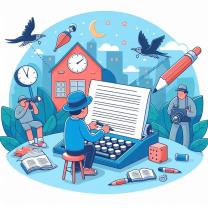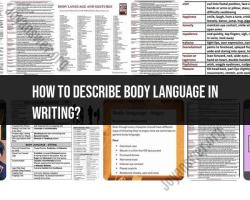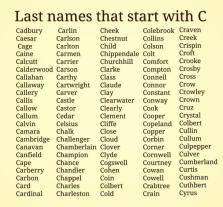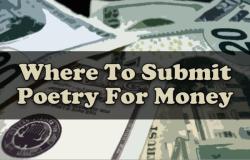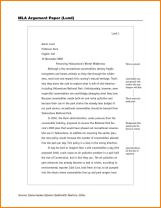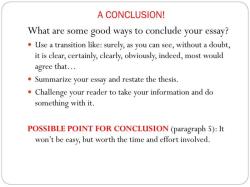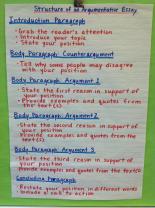What are creative writing exercises?
Creative writing exercises are structured activities designed to stimulate and inspire the creative writing process. These exercises are often used by writers to break through writer's block, overcome challenges, and generate new ideas. They can be beneficial for writers of all levels, from beginners to experienced authors, and can cover a variety of genres and styles. Creative writing exercises can focus on different elements of storytelling, such as character development, plot creation, setting, dialogue, and more.
Here are some engaging creative writing exercises:
Character Interviews:
- Write a detailed interview with one of your characters. Explore their background, motivations, fears, and desires. This can help you develop a deeper understanding of your characters.
Stream of Consciousness Writing:
- Set a timer for a specific duration (e.g., 10 minutes) and write without stopping or censoring yourself. Let your thoughts flow freely, even if they seem random or disconnected. This exercise can help unlock creativity and overcome self-criticism.
Random Word Prompts:
- Choose a random word or use a word generator. Write a short story or poem that incorporates that word in a meaningful way. This exercise encourages creative thinking and the integration of unexpected elements.
Flash Fiction Challenges:
- Write a complete story in a very short space, such as 100 or 200 words. The constraint of brevity forces writers to be concise and focus on the essentials of storytelling.
Writing from Different Perspectives:
- Take a scene or event from your work in progress and rewrite it from the perspective of a different character. This exercise helps you explore different voices and viewpoints.
Imaginary Dialogue:
- Write a conversation between two fictional characters or create a dialogue between inanimate objects. This can help improve dialogue writing skills and creativity.
Visual Prompts:
- Choose a random image or photo. Write a story or poem inspired by the visual elements in the image. This exercise encourages descriptive writing and visual storytelling.
Reimagining Fairy Tales:
- Take a classic fairy tale and give it a modern or unexpected twist. Explore alternative endings, settings, or character motivations.
First and Last Sentences:
- Write the first and last sentences of a story. Challenge yourself to create an engaging opening and a satisfying conclusion. Then, build the story that connects them.
Genre Mashup:
- Combine elements of two different genres to create a unique story. For example, merge science fiction with romance or mystery with fantasy.
Letter to Your Future Self:
- Write a letter to yourself from the perspective of the future. Share your current hopes, fears, and aspirations. This exercise can be both reflective and forward-looking.
Setting Exploration:
- Describe a setting in vivid detail, engaging all the senses. Use this as a foundation for a scene in a larger work or as a standalone descriptive piece.
Creative writing exercises are versatile tools that can be adapted to suit various goals and preferences. They provide a structured and playful approach to generating ideas, improving writing skills, and fostering creativity in the writing process.
What sorts of exercises are involved in creative writing practices?
The wonderful thing about creative writing is that it's like a playful playground for your imagination, and the exercises you can do are as diverse as the stories you dream up! Here are some categories of creative writing exercises to get you started:
Spark Your Imagination:
- Freewriting: Set a timer for 5-10 minutes and write whatever comes to mind, without stopping or editing. This helps break writer's block and unlocks unexpected ideas.
- Sensory Prompts: Focus on a specific sense (sight, smell, taste, touch, sound) and describe it in detail using vivid language. This builds immersive imagery in your writing.
- Random Word Collage: Cut out words from magazines or use a word generator. Write a story or poem using as many of the words as possible. This challenges you to work with unexpected elements.
- Character Interviews: Imagine interviewing one of your characters. Ask them questions about their backstory, motivations, and secrets. This deepens character development.
Practice Storytelling Techniques:
- Sentence Starters: Write down several sentence starters in different genres (e.g., "The detective woke to the smell of burnt coffee and a missing file," "Once upon a time, in a kingdom made of clouds,"). Start your story with one and see where it takes you.
- Dialogue Drills: Write a conversation between two characters with contrasting personalities or goals. Focus on their motivations and subtext.
- Flash Fiction: Tell a complete story in just 100 words. This condenses your narrative skills and forces you to focus on the essentials.
- Plot Twists: Take a familiar story and introduce a sudden twist. This challenges you to think creatively and play with expectations.
Explore Style and Voice:
- Point of View Swap: Rewrite a scene from a different character's perspective. This helps you understand their motivations and show the story from multiple angles.
- Tone Experiments: Write the same scene in different tones (e.g., humorous, dramatic, satirical). This broadens your range and gives you flexibility in your writing.
- Figurative Language Challenge: Pick a specific figure of speech (e.g., metaphor, simile, personification) and sprinkle it throughout your writing. This enhances your descriptions and adds imagery.
- Genre Mash-ups: Combine elements of different genres (e.g., a sci-fi detective story, a historical romance with zombies). This pushes you to think outside the box and create something unique.
Remember, the best exercises are the ones that spark your creativity and let you have fun with language. Don't be afraid to experiment, make mistakes, and see where your imagination takes you!
Here are some additional tips:
- Keep a writing journal: This is a safe space to jot down ideas, practice techniques, and experiment without pressure.
- Read widely: Expose yourself to different genres and styles. See how other writers approach storytelling and find inspiration.
- Share your work: Get feedback from friends, family, or writing groups. Constructive criticism can help you improve.
- Most importantly, have fun! Creative writing should be a joyful journey of exploration and discovery.
Enjoy the process, and happy writing!
